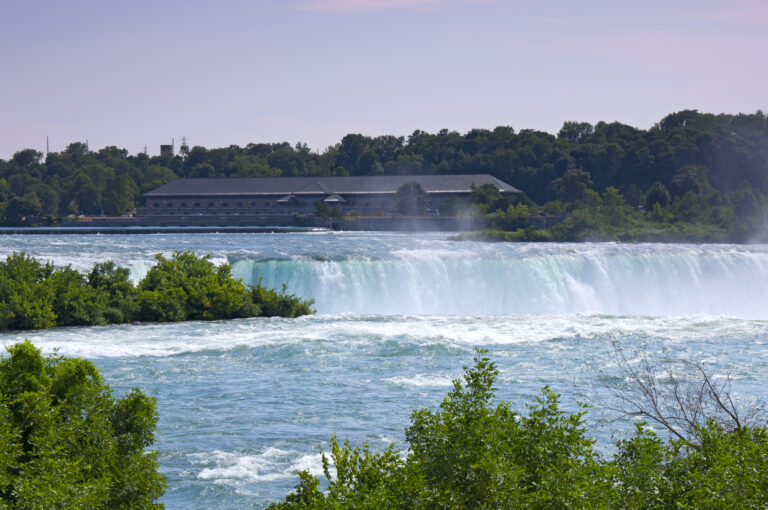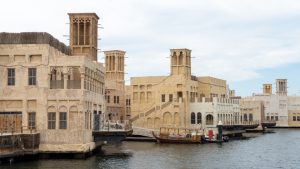
Fun & Educational Niagara Falls Tour
Last updated on April 30, 2025 by K S
Fun & Educational Niagara Falls Tour – Overview
More than a place to take great selfies, Niagara Falls is a living, roaring classroom where you can learn about history, geology, engineering, and legends. Whether you’re there for fun, the facts, or both, one thing is for sure: that fun & educational Niagara Falls tour is unforgettable.
Because it’s a place where natural beauty meets fascinating science, ancient legends flow right alongside modern technology. Lending your ears to the power-packed history of Niagara Falls is jaw-dropping.
Interesting Facts You Didn’t Know About Niagara Falls
Have you heard these wild facts about Niagara Falls? Niagara is a pack of interesting facts that each of us must have known.
- It’s fast and furious; around 3,160 tons of water flow over Niagara Falls every second. You heard it correctly, every second!
- It’s technically three waterfalls – Horseshoe Falls, American Falls, and Bridal Veil Falls make up the trio, Niagara Falls.
- It’s been moving! Over the last 12,000 years, the falls have moved back about 11 kilometres (7 miles) due to erosion.
- From tightrope walkers to people going over the falls in barrels, it’s been the site of some wild stunts.
- With all that mist in the air, it’s no wonder you’ll often see a rainbow arching across the falls on sunny days.
- Last but not least, impress your travel buddies by tossing out some fun facts when you visit the cascade again.

The thunderous Falls- view from the Canadian side!
History of Niagara Falls: From Native Legends to Modern Wonder
Beyond the thundering wall of water, Niagara is a place filled with stories, science, and surprises. Take a journey through time and see how it became one of the world’s famous natural wonders.
Long Ago Legends of the Falls
Long before the boat tours and observation decks, Niagara Falls was a sacred site for indigenous people. One of the old tales is the story of a maiden, Lelawala, who sacrificed herself to the river to save her people. She met the Thunder God, who lived behind the waterfall. The legend’s echoing in the mist, still today.
The Native American tribes believed the falls were sacred and told the stories of powerful spirits living in the roaring waters. The stories connected people deeply with nature and showed their respect for the river.
The Europeans
European explorers arrived in the 1600s, and Niagara had become a booming tourist attraction. The arrival of railroads made it more accessible, and before long, it was the place to honeymoon or take a family trip.
Taming the Power
By the 1800s, people began to think, ” What if we use the water to make power?”
Inventors and engineers worked hard to turn falling water into electricity. The big moment came in the 1890s when Nikola Tesla and George Westinghouse built one of the world’s first hydroelectric power plants right at Niagara Falls. The history happens to change forever.

Surroundings of Niagara Falls
As more power plants were built, factories and cities around Niagara began to grow. The falls helped light up homes, run machines, and fuel progress. Now, Niagara turns a source of energy that lights up millions of homes in Canada and U.S.
Today, you’ll find a blend of preserved nature, vintage charm, and modern marvels. History buffs visit Old Fort Niagara, the Niagara Parks Tower Station, or even the Niagara Falls History Museum to learn about this natural wonder becoming a golden icon.
How Fun & Educational Niagara Falls Powers Ontario and New York with Hydroelectricity
Niagara Falls is, also, a powerhouse. Do you know? Literally, the mighty flow of the water is used to generate clean, renewable electricity for both Ontario and New York.
How Does That Happen?
Every second, thousands of gallons of water tumble down the falls. That fast-moving water has a lot of energy. Scientists and engineers figured out how to capture that energy using something called hydroelectric power.
Let’s get deep. How it works…
- Water flows from the Niagara River into special tunnels.
- It turns giant wheels called turbines.
- These turbines power machines that make electricity.
- The electricity then travels through wires to homes, schools, and even your favourite ice cream shop.
What’s so special about it?
- It’s clean energy. No smoke. No Pollution.
- It uses the power of nature. No oil or coal.
- It can power up to 3.8 million homes. Doesn’t that sound great?
Facts to Know
- Niagara Falls produces more than 2 million kilowatts of power, which is enough to charge more than billions of phones.
- Less water flows over the falls at night. Because more is sent to the power stations. The falls are still pretty and glowing with lights.
Power Homes in Canada and the U.S
Niagara Falls serves as a major source of hydroelectric power. The main power producers of Niagara include Sir Adam Beck Hydroelectric Generating Stations, Canada; Robert Moses Niagara Power Plant; and Lewiston Pump Generating Plant in the United States. All these power stations generate altogether 5 million kilowatts of power, serving both Canada and the United States.
Visit nearby old power stations, explore exhibits, and see the history of hydroelectricity in action. Admire and applaud the science, history, and nature all rolled into one epic stop.





